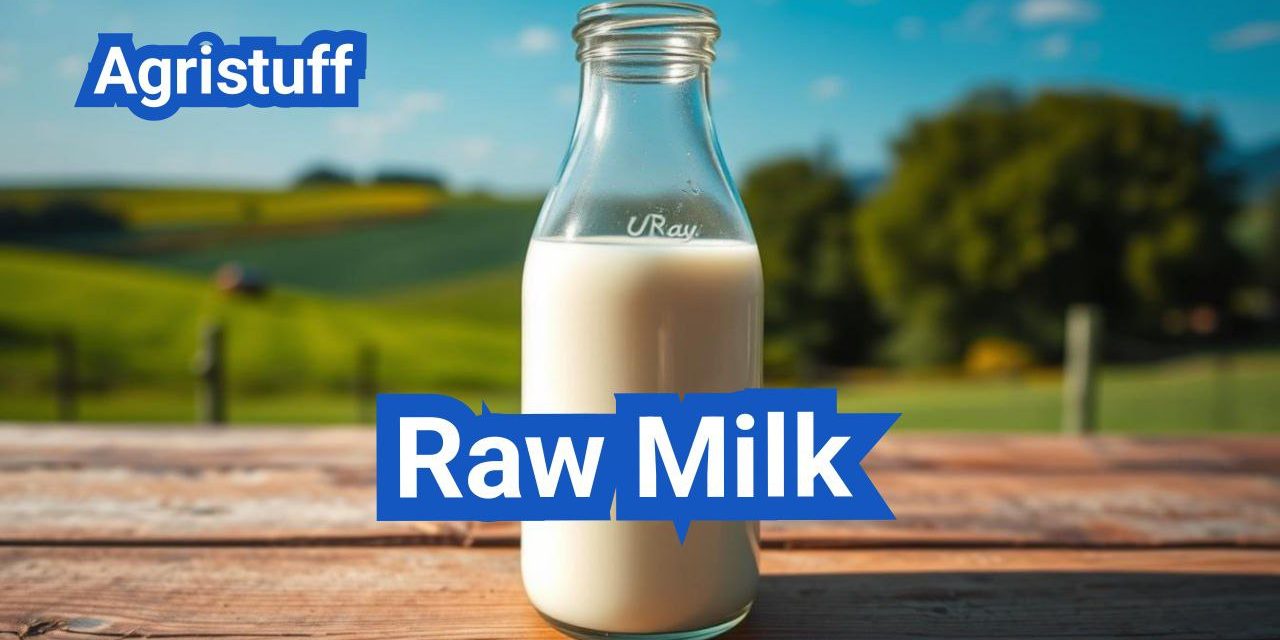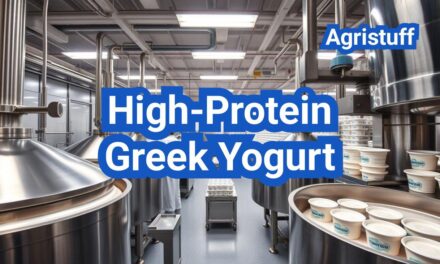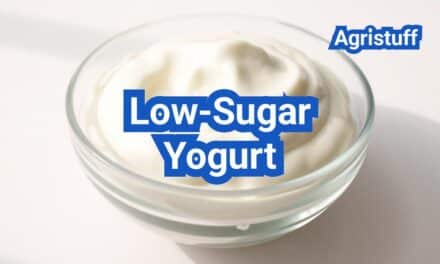The debate surrounding raw milk consumption has been ongoing in the United States, with proponents arguing it has numerous health benefits, while opponents highlight its potential dangers.
Raw milk, or unpasteurized milk, can contain a variety of disease-causing pathogens. Despite this, many believe it retains more of its natural nutritional content compared to pasteurized milk. The laws governing the sale and consumption of raw milk vary significantly by state, adding to the complexity of the issue.
Understanding the benefits and risks associated with raw milk consumption is crucial for making informed decisions. This article will explore the safety concerns, legal landscape, and nutritional aspects of raw milk in the U.S.
Key Takeaways
- The consumption of raw milk is a controversial topic in the U.S., with debates over its safety and nutritional value.
- Laws regarding raw milk vary by state, affecting its availability and consumption.
- Raw milk can contain harmful pathogens, but proponents argue it has health benefits.
- The nutritional differences between raw and pasteurized milk are a key consideration.
- Understanding the risks and benefits is essential for consumers.
What Is Raw Milk? Understanding the Basics
Raw milk is essentially milk that is consumed in its most natural state, without the process of pasteurization that is commonly applied to dairy products. This means that raw milk has not been heat-treated to kill harmful bacteria, preserving its original nutritional profile and microbial content.
Definition and Characteristics of Unpasteurized Milk
Unpasteurized milk, or raw milk, is characterized by its lack of heat treatment. This characteristic preserves the milk’s natural enzymes, vitamins, and beneficial bacteria, which some argue contribute to its nutritional value and potential health benefits. The composition of raw milk can vary depending on factors like the cow’s diet, breed, and living conditions, as well as the milking practices employed by the dairy farm.
Nutritional Profile: Raw milk contains a rich mix of macronutrients, including proteins, fats, and carbohydrates. It is also a source of various vitamins and minerals, some of which are naturally present, while others are enhanced by the cow’s diet and living conditions.
Historical Consumption Patterns in America
Historically, raw milk was the primary form of milk consumed in America until the early 20th century. The advent of pasteurization led to a significant shift towards pasteurized milk due to concerns over milk-borne illnesses. However, there has been a resurgence of interest in raw milk in recent decades, driven by consumer demand for what is perceived as a more natural product.
The historical context of raw milk consumption highlights a complex interplay between traditional practices, consumer preferences, and public health concerns. Understanding this history is crucial for appreciating the ongoing debates surrounding raw milk.
The History of Milk Pasteurization in the United States
The introduction of pasteurization marked a significant shift in how milk was processed and consumed in America. Before the widespread use of pasteurization, milk-borne illnesses were a significant public health concern. The process of pasteurization, named after Louis Pasteur, was initially adopted in the late 19th century but didn’t become widespread until the early 20th century in the United States.
“Pasteurization has been instrumental in reducing the incidence of milk-borne diseases,” as noted by dairy safety experts. The process involves heating milk to a high temperature for a short period, followed by rapid cooling, to kill harmful bacteria.
Why Pasteurization Was Introduced
Pasteurization was introduced primarily to address the risk of milk-borne pathogens such as Mycobacterium tuberculosis, Salmonella, and E. coli. These pathogens were responsible for numerous outbreaks of disease, including tuberculosis and brucellosis, which were significant public health concerns at the time.
The development of pasteurization technology and its implementation in dairy processing was a response to the growing awareness of the role of milk in disease transmission. As urbanization increased and dairy farming became more industrialized, the need for a safe and reliable method of milk processing became more pressing.
The Development of Modern Milk Processing Standards
The development of modern milk processing standards in the United States has been shaped by advances in pasteurization technology, as well as by regulatory efforts to ensure milk safety. The Pasteurized Milk Ordinance (PMO) has played a crucial role in standardizing pasteurization practices across the country.
Modern dairy processing facilities now employ sophisticated pasteurization techniques, including high-temperature short-time (HTST) pasteurization and ultra-high temperature (UHT) pasteurization. These methods have significantly improved the safety and quality of milk products.
The contrast between raw milk and processed milk has become a topic of debate, with proponents on both sides arguing about the benefits and risks associated with each. While raw milk advocates argue that it contains beneficial bacteria and nutrients, opponents point to the risk of pathogens and the proven safety record of pasteurized milk.
Raw Milk vs. Pasteurized Milk: Key Differences
Understanding the differences between raw and pasteurized milk is crucial for consumers making informed choices. The distinction between these two types of milk is not just about personal preference; it involves significant differences in processing, taste, and storage requirements.
Processing Methods Compared
Raw milk is milk that has not been pasteurized or heat-treated in any way. It is drawn directly from the cow, goat, or sheep and is either bottled or distributed directly to consumers. On the other hand, pasteurized milk has been heated to a high temperature to kill off harmful bacteria. This process involves heating the milk to at least 161°F for at least 15 seconds, followed by rapid cooling.
The pasteurization process affects the milk’s natural state by altering its bacterial content. While raw milk contains both beneficial and potentially harmful bacteria, pasteurized milk has been stripped of most bacteria, reducing the risk of milk-borne illnesses.
Taste and Sensory Differences
One of the most noticeable differences between raw and pasteurized milk is their taste. Raw milk often has a richer, creamier flavor that many consumers describe as more natural. This is because the pasteurization process can affect the milk’s flavor profile, sometimes giving pasteurized milk a slightly cooked or boiled taste.
The sensory experience of consuming raw milk versus pasteurized milk can also vary. Raw milk’s texture and consistency are often preferred by those who enjoy it, as it can have a more natural, creamy texture.
Shelf Life and Storage Requirements
The shelf life of raw milk is significantly shorter than that of pasteurized milk. Raw milk typically needs to be consumed within a few days of purchase, as it is more susceptible to bacterial contamination. It requires careful storage in the refrigerator at a consistent, cool temperature.
Pasteurized milk, due to its reduced bacterial content, has a longer shelf life and can be stored for longer periods. However, it still requires refrigeration to prevent spoilage.
In conclusion, the choice between raw and pasteurized milk depends on individual preferences regarding taste, concerns about safety, and understanding of the processing differences. By considering these factors, consumers can make informed decisions that best suit their needs.
The Nutritional Profile of Raw Milk

Raw milk contains a complex mix of nutrients, including proteins, fats, vitamins, and minerals, making it a valuable dietary component. The nutritional profile of raw milk is diverse and includes several key elements that contribute to its potential health benefits.
Macronutrients in Raw Milk
Raw milk is a rich source of macronutrients, including proteins, fats, and carbohydrates. The proteins in raw milk, such as casein and whey, are considered high-quality proteins that provide essential amino acids necessary for various bodily functions. The fat content in raw milk includes a mix of saturated and unsaturated fatty acids, which are important for energy and the absorption of fat-soluble vitamins.
Vitamins and Minerals Content
Raw milk is an excellent source of various vitamins and minerals. It contains fat-soluble vitamins such as vitamins A, D, E, and K, which are crucial for maintaining healthy vision, bone health, and immune function. Additionally, raw milk is a good source of minerals like calcium, phosphorus, and potassium, which are essential for bone health and other physiological processes.
Enzymes and Bioactive Components
Raw milk also contains enzymes and bioactive components that are often diminished or destroyed during the pasteurization process. These include enzymes like lactoperoxidase and alkaline phosphatase, which have antimicrobial properties and play roles in nutrient metabolism. The bioactive components in raw milk can contribute to its potential health benefits, including improved digestion and immune system support.
In summary, the nutritional profile of raw milk is characterized by its rich content of macronutrients, vitamins, minerals, and bioactive components. Understanding these nutritional aspects is essential for evaluating the potential benefits and risks associated with consuming raw milk.
Potential Health Benefits of Raw Milk
The consumption of raw milk has been associated with various potential health benefits, including enhanced digestibility and immune function. Proponents of raw milk argue that it contains beneficial bacteria and enzymes that can aid in digestion and support overall health.
Digestibility and Lactose Intolerance Claims
One of the primary claims made by raw milk advocates is that it is easier to digest than pasteurized milk. Some believe that the natural enzymes present in raw milk, such as lactase, can help break down lactose, making it more tolerable for individuals with lactose intolerance.
Lactose intolerance is a condition where individuals lack sufficient lactase enzyme to digest lactose, a sugar found in milk. While the science is still emerging, some studies suggest that consuming raw milk may help alleviate symptoms of lactose intolerance in some individuals.
Immune System Support Arguments
Raw milk is also believed to support the immune system due to its content of beneficial bacteria and other bioactive compounds. These components may help in developing a stronger immune response, potentially reducing the risk of infections.
The presence of immunoglobulins and other immune factors in raw milk is thought to contribute to its immune-boosting properties. However, more research is needed to fully understand the extent of raw milk’s impact on human immunity.
Allergy Prevention Theories
Some research suggests that consuming raw milk during early childhood may reduce the risk of developing allergies. The theory is that exposure to a diverse range of bacteria in raw milk could help in shaping the immune system and preventing allergic reactions.
While these findings are promising, it’s essential to note that the current evidence is largely observational, and more rigorous studies are required to confirm the role of raw milk in allergy prevention.
Safety Concerns and Risks Associated with Raw Milk

Raw milk, while touted for its health benefits, carries inherent risks of foodborne illnesses. The absence of pasteurization means that raw milk can contain harmful bacteria and other pathogens that are typically killed during the pasteurization process.
Common Pathogens Found in Raw Milk
Raw milk can be contaminated with various pathogens, including E. coli, Salmonella, and Listeria. These bacteria can cause severe foodborne illnesses, ranging from diarrhea and abdominal cramps to life-threatening conditions like hemolytic uremic syndrome (HUS).
- E. coli: A bacterium that can cause severe diarrhea and kidney failure, particularly in children and the elderly.
- Salmonella: Known to cause salmonellosis, which can lead to symptoms like fever, diarrhea, and abdominal cramps.
- Listeria: Can cause listeriosis, a serious infection that can be life-threatening for pregnant women, newborns, and individuals with weakened immune systems.
Documented Outbreaks and Illnesses
There have been numerous documented outbreaks of foodborne illnesses associated with raw milk consumption. According to the Centers for Disease Control and Prevention (CDC), raw milk is responsible for a disproportionate number of dairy-related outbreaks.
| Year | Outbreak Location | Pathogen | Number of Cases |
|---|---|---|---|
| 2019 | California, USA | Salmonella | 17 |
| 2020 | New York, USA | E. coli | 12 |
| 2018 | Utah, USA | Listeria | 8 |
Vulnerable Populations at Higher Risk
Certain populations are at a higher risk of severe illness from consuming raw milk. These include:
- Pregnant Women: Due to the risk of listeriosis, which can lead to miscarriage, stillbirth, or premature birth.
- Children and Infants: More susceptible to severe outcomes from E. coli and other infections.
- Older Adults: May have weakened immune systems, making them more vulnerable to infections.
- Immunocompromised Individuals: Those with weakened immune systems due to illness or treatment are at a higher risk of severe illness.
Understanding these risks is crucial for making informed decisions about consuming raw milk.
Federal Regulations Governing Raw Milk in the U.S.

Federal regulations governing raw milk are designed to balance consumer choice with public health concerns. The sale and distribution of raw milk are subject to various federal laws and guidelines, primarily enforced by the FDA.
FDA Position on Raw Milk
The FDA has a clear stance on raw milk, emphasizing the risks associated with its consumption. The agency prohibits the sale of raw milk across state lines for human consumption, citing the risk of pathogens such as Salmonella and E. coli.
Interstate Commerce Restrictions
The FDA’s restrictions on interstate commerce significantly impact the availability of raw milk. Raw milk can only be sold within the state where it is produced, unless it has been pasteurized. This restriction limits the distribution of raw milk across state lines.
The Pasteurized Milk Ordinance (PMO)
The PMO is a critical document that outlines the standards for milk production and processing in the U.S. While it primarily focuses on pasteurized milk, its guidelines indirectly influence raw milk regulations by setting a high standard for milk safety.
| Regulation | Description | Impact on Raw Milk |
|---|---|---|
| FDA Oversight | FDA regulates raw milk, particularly in interstate commerce. | Limits interstate sales of raw milk. |
| PMO Guidelines | Sets standards for milk production and processing. | Influences raw milk safety standards indirectly. |
| State Laws | Vary by state, some allow raw milk sales, others restrict. | Affects availability within states. |
In conclusion, federal regulations play a crucial role in shaping the raw milk landscape in the U.S. Understanding these regulations is essential for both consumers and producers.
Raw Milk Laws by State: A Comprehensive Guide
Raw milk laws vary significantly across the United States, making it essential to understand the regulations in your state. The legal status of raw milk sales is not uniform, with different states having different rules regarding its sale and distribution.
States Where Retail Sales Are Legal
Some states allow the retail sale of raw milk, making it accessible to consumers through regular grocery stores or dedicated raw milk retailers. As of the latest updates, states like California, Arizona, and Washington permit the sale of raw milk in retail stores under certain conditions.
States Permitting Farm Direct Sales Only
In many states, raw milk can be purchased directly from the farm, either through on-farm sales or through community-supported agriculture (CSA) programs. This model is allowed in states such as Wisconsin, Michigan, and New York, providing consumers with a way to obtain raw milk while supporting local agriculture.
States Where All Raw Milk Sales Are Prohibited
There are states where the sale of raw milk is entirely prohibited. These states have laws that restrict the sale of unpasteurized milk for human consumption. Examples include states like Delaware, Mississippi, and New Jersey, where raw milk sales are not allowed under any circumstances.
| State | Raw Milk Sales Status | Notes |
|---|---|---|
| California | Allowed in Retail | Must meet state regulations |
| Wisconsin | Farm Direct Sales Only | On-farm sales permitted |
| Delaware | Prohibited | No raw milk sales allowed |
Understanding these regulations is crucial for both consumers and producers of raw milk. By knowing the laws in your state, you can make informed decisions about where to buy raw milk and how to comply with state regulations.
Legal Ways to Buy Raw Milk in the United States

Despite regulatory restrictions, there are legitimate ways to purchase raw milk in the U.S. Consumers have found alternative methods to access raw milk, ranging from shared ownership programs to direct farm purchases.
Herdshare and Cowshare Programs Explained
Herdshare and cowshare programs are arrangements where multiple individuals collectively own a cow or a herd of cows. This model allows participants to share the milk produced, effectively making them consumers rather than buyers, thus circumventing some legal restrictions.
Key aspects of these programs include:
- Shared ownership or leasing of livestock
- Distribution of milk among participants
- Legal compliance by not selling raw milk directly to consumers
As noted by raw milk advocacy groups, “Herdshare programs provide a legal workaround for consumers to access raw milk while complying with state laws.”
Farm Direct Sales Where Permitted
In some states, farm direct sales of raw milk are allowed, either through on-farm sales or through community-supported agriculture (CSA) programs. This method enables consumers to buy raw milk directly from the producer.
Benefits of farm direct sales include:
- Freshness and quality control
- Transparency about the dairy farming practices
- Potential for building a relationship with the farmer
Pet Food Labeling and Other Workarounds
Some consumers have turned to labeling raw milk as “pet food” to circumvent sales restrictions. However, this practice is controversial and often illegal, as it mislabels a product intended for human consumption.
“The legality and safety of consuming raw milk labeled as pet food are significant concerns, as it bypasses regulations designed to protect public health.”
It’s crucial for consumers to understand the legal and health implications of such workarounds and to seek out lawful and safe methods of obtaining raw milk.
Raw Milk Cheese and the 60-Day Aging Rule

Raw milk cheese, known for its rich flavor and nutritional profile, is subject to specific regulations in the United States. The production and sale of raw milk cheese are governed by distinct rules, including the 60-day aging requirement, which significantly impacts its microbial safety.
Why Cheese Has Different Regulations
Cheese made from raw milk is treated differently under U.S. regulations compared to raw milk itself. The primary reason for this distinction lies in the processing and aging of cheese, which can significantly reduce the risk of harmful pathogens.
The 60-day aging rule is a critical component of these regulations. This rule allows raw milk cheese to be sold if it has been aged for at least 60 days, during which time the moisture content decreases, and the salt content increases, making it less hospitable to harmful bacteria.
How Aging Affects Microbial Safety
The aging process of cheese is crucial for its microbial safety. As cheese ages, several factors contribute to the reduction of pathogens:
- Decrease in moisture content
- Increase in salt concentration
- Development of beneficial microbial flora
These changes create an environment that is less conducive to the survival of harmful bacteria, thereby enhancing the safety of the cheese for consumption.
Popular Raw Milk Cheeses in the U.S. Market
Several types of raw milk cheese are popular in the U.S. market, including:
| Cheese Type | Aging Period | Characteristics |
|---|---|---|
| Parmesan | Often aged over 12 months | Granular texture, nutty flavor |
| Gouda | Varied, from a few months to several years | Rich, caramel flavor when aged |
| Cheddar | Can be aged from a few months to over a year | Sharp flavor, firm texture |
These cheeses are not only enjoyed for their flavor but also for their perceived health benefits associated with raw milk consumption.
How to Safely Handle and Store Raw Milk
Proper handling and storage of raw milk are essential to maintaining its quality and safety. Raw milk, being a nutrient-rich product, can be a fertile ground for bacterial growth if not handled correctly.
Proper Storage Temperatures
Raw milk should be stored at a refrigerator temperature of 40°F (4°C) or below to slow down bacterial growth. It’s crucial to maintain this temperature consistently to ensure the milk remains safe for consumption.
Container Recommendations
The container used for storing raw milk should be clean, sanitized, and tightly sealed. Glass or food-grade plastic containers are recommended as they are non-reactive and can be thoroughly cleaned.
Key considerations for containers include:
- Cleanliness: Ensure the container is free from any residual contaminants.
- Material: Opt for glass or food-grade plastic that won’t impart flavors or chemicals to the milk.
- Sealability: A tight seal prevents contamination and exposure to air.
Shelf Life Expectations
The shelf life of raw milk, when stored properly, is typically shorter than that of pasteurized milk. Generally, it is recommended to consume raw milk within 3 to 5 days of purchase or milking, depending on storage conditions and handling practices.
It’s also important to check the milk regularly for any signs of spoilage, such as off smells or curdling, regardless of the storage duration.
Finding Reputable Raw Milk Sources

The quest for high-quality raw milk begins with identifying reputable sources. Consumers must be diligent in their search to ensure they are obtaining milk from a safe and healthy dairy operation.
Questions to Ask Your Farmer
When sourcing raw milk, it’s essential to ask the right questions. Inquire about the farm’s milking practices, including how they handle cow hygiene and milking equipment sanitation. Ask about their veterinary care practices and how they manage cow health. Understanding their testing protocols for pathogens and contaminants is also crucial.
- What are your milking and sanitation procedures?
- How do you test for pathogens and contaminants?
- Can you provide information on the health and veterinary care of your cows?
Signs of a Clean and Safe Dairy Operation
A reputable dairy operation will have visible signs of cleanliness and safety. Look for cleanliness in the milking parlor and proper storage and handling of milk. The cows should appear healthy, and the overall environment should be well-maintained.
“A clean and safe dairy operation is not just about the milk; it’s about the overall health of the cows and the farm environment.”
— Dr. Jane Smith, Dairy Safety Expert
Testing and Quality Assurance Measures
Reliable raw milk sources will have rigorous testing and quality assurance measures in place. This includes regular testing for pathogens and contaminants, as well as adherence to quality control standards.
| Testing Parameter | Frequency | Standard |
|---|---|---|
| Pathogen Testing | Weekly | Zero Tolerance |
| Somatic Cell Count | Monthly | <200,000 cells/mL |
| Antibiotic Residue Testing | Quarterly | Zero Tolerance |
By asking the right questions, observing the condition of the dairy operation, and understanding their testing measures, consumers can make informed decisions about their raw milk sources.
The Raw Milk Debate: Scientific Perspectives

Scientific perspectives on raw milk are multifaceted, reflecting a complex interplay between nutritional benefits and safety concerns. The ongoing debate has led to a thorough examination of existing research, with various studies shedding light on the validity of claimed benefits and the assessment of potential health risks.
Current Research on Claimed Benefits
Recent studies have investigated the potential benefits of raw milk consumption, including its impact on digestive health and the immune system. Some research suggests that raw milk may contain beneficial bacteria and enzymes that are destroyed during pasteurization, potentially aiding in digestion and providing immune system support.
“Some studies have shown that children who consume raw milk may have a lower risk of developing allergies and asthma, although the evidence is not yet conclusive.”
A study published in the Journal of Allergy and Clinical Immunology found that raw milk consumption was associated with a reduced risk of allergies in children. However, other research has raised concerns about the lack of standardization in raw milk production and the potential for contamination.
Scientific Consensus on Safety Concerns
Despite the potential benefits, the scientific community remains concerned about the safety of raw milk. Pathogens such as Salmonella, E. coli, and Listeria can contaminate raw milk, posing a significant risk to consumers, particularly vulnerable populations like the elderly, pregnant women, and young children.
The Centers for Disease Control and Prevention (CDC) and the Food and Drug Administration (FDA) have consistently advised against the consumption of raw milk due to these safety concerns. The CDC reports that outbreaks associated with raw milk consumption have led to hospitalizations and, in some cases, fatalities.
Gaps in Research and Ongoing Studies
While there is a significant body of research on raw milk, there are still gaps in understanding its long-term effects on health. Ongoing studies are investigating the nutritional and immunological benefits of raw milk, as well as its potential risks.
Further research is needed to fully understand the implications of raw milk consumption and to inform evidence-based policies. As the debate continues, it is crucial for consumers to be aware of both the potential benefits and the risks associated with raw milk.
Special Considerations: H5N1 and Other Emerging Concerns
The emergence of the H5N1 virus has raised significant concerns regarding its presence in milk and the effectiveness of pasteurization processes. As the dairy industry continues to evolve, understanding the implications of emerging pathogens like H5N1 is crucial for consumers and producers alike.
H5N1 Virus and Milk Pasteurization
The H5N1 virus, primarily known for its impact on poultry, has recently been detected in dairy cattle, raising concerns about its potential transmission through raw milk. Research has shown that pasteurization is effective in inactivating the virus, thereby ensuring the safety of pasteurized milk.
Key Findings on H5N1 and Pasteurization:
| Aspect | Details |
|---|---|
| Virus Presence | H5N1 detected in dairy cattle |
| Pasteurization Effectiveness | Effective in inactivating H5N1 |
| Raw Milk Risk | Potential transmission risk |
Addressing Emerging Pathogen Risks
Besides H5N1, other emerging pathogens can pose significant risks to raw milk safety. Continuous monitoring and robust safety measures are essential to mitigate these risks.
Strategies for Mitigating Emerging Pathogen Risks:
- Regular testing of milk for pathogens
- Implementation of strict hygiene practices on dairy farms
- Education for consumers on safe handling practices
By understanding the risks associated with emerging pathogens like H5N1 and implementing effective safety measures, the dairy industry can continue to provide safe products for consumers.
Making Informed Decisions About Raw Milk
Consumers considering raw milk must weigh its potential benefits against the risks. Understanding the differences between raw and pasteurized milk is crucial for making informed decisions.
Raw milk offers unique nutritional profiles and potential health benefits, but it also carries safety concerns due to the risk of pathogens. Federal regulations and state laws govern the sale and distribution of raw milk, varying significantly across the United States.
To make safe choices, consumers should be aware of the sources of raw milk, proper handling and storage techniques, and the potential risks, especially for vulnerable populations. By considering these factors, individuals can make informed decisions about incorporating raw milk into their diets.
Ultimately, being informed about raw milk benefits and risks allows consumers to navigate the complex landscape of milk consumption, aligning their choices with their health needs and preferences.
FAQ
What is raw milk?
Raw milk is milk that has not been pasteurized or heat-treated, retaining its natural bacteria, enzymes, and nutrients.
Is raw milk safe to consume?
Raw milk can pose a risk of containing harmful bacteria like E. coli, Salmonella, and Listeria, which can cause serious illness, especially in vulnerable populations.
What are the benefits of raw milk?
Proponents claim raw milk has better taste, improved nutrition, and potential health benefits, including easier digestibility and immune system support.
How is raw milk different from pasteurized milk?
Raw milk is not heat-treated, whereas pasteurized milk is heated to kill bacteria, extending shelf life but potentially altering nutritional content.
Can I buy raw milk in any state?
No, raw milk laws vary by state, with some allowing retail sales, others permitting farm direct sales, and some prohibiting all raw milk sales.
What is the Pasteurized Milk Ordinance (PMO)?
The PMO is a set of regulations governing the production, processing, and sale of milk and milk products, including pasteurization requirements for interstate commerce.
How can I legally buy raw milk?
You can join a herdshare or cowshare program, buy directly from a farm where permitted, or look for raw milk cheese and other products.
What is the 60-day aging rule for raw milk cheese?
The 60-day aging rule allows raw milk cheese to be sold if aged for at least 60 days, as this process is believed to reduce pathogens.
How should I store raw milk?
Store raw milk in the refrigerator at a temperature below 40°F (4°C), in a clean, covered container, and consume within a few days.
How can I ensure I’m buying raw milk from a reputable source?
Ask farmers about their sanitation practices, testing procedures, and animal health, and look for signs of a clean operation.
What is the H5N1 virus, and how does it relate to milk safety?
H5N1 is a bird flu virus that has been detected in some dairy herds; pasteurization is effective against this virus, emphasizing the importance of proper milk handling.
Are there any specific groups that should avoid raw milk?
Yes, vulnerable populations, including pregnant women, young children, the elderly, and those with weakened immune systems, are advised to avoid raw milk due to the risk of serious illness.
Can raw milk be beneficial for lactose intolerance?
Some claim raw milk is easier to digest due to its natural enzymes, but scientific evidence is limited, and individual tolerance varies.
What are the nutritional benefits of raw milk?
Raw milk contains a range of nutrients, including proteins, vitamins, and minerals, as well as bioactive components and beneficial bacteria.
Conclusion of: Raw Milk In USA
Raw milk at a glance (what it is and why it’s debated)
Raw milk is milk that has not been heat-treated through pasteurization, and in the U.S. raw milk remains controversial because some consumers value flavor and “natural” qualities while public health agencies emphasize higher foodborne illness risk; if you’re considering raw milk for your household, it helps to understand the evidence, the rules, and the real-world safety profile. CDC: Raw milk overview
How pasteurization makes milk safer
Pasteurization protects raw milk drinkers by using specific time–temperature treatments that inactivate pathogens like Campylobacter, E. coli, Listeria, and Salmonella, and U.S. federal law requires pasteurization for milk shipped in final consumer packages across state lines, which is why commercial interstate sales of raw milk are prohibited. 21 CFR §1240.61 (pasteurization rule)
Raw milk and recent H5N1 (bird flu) concerns
In 2024–2025, detections of avian influenza A(H5N1) in U.S. dairy cattle raised questions about raw milk, and FDA guidance has stressed that standard pasteurization conditions are designed to inactivate known milk-borne hazards while advising consumers to avoid raw milk that could contain infectious virus. FDA: H5N1 & the milk supply
What the law says: federal baseline vs. state rules
While federal rules block interstate shipment of raw milk for human consumption, states decide what is legal within their borders, and many follow the Grade “A” Pasteurized Milk Ordinance (PMO) framework; therefore your access to raw milk depends on your state’s statutes, regulations, and permits. CDC Public Health Law Program: raw milk laws
State examples: California, New York, and Texas
California allows retail sales of raw milk under strict standards and warnings, New York permits only on-farm sales with a raw milk permit and signage, and Texas licenses “Raw for Retail” dairies with testing and delivery options—three different models that illustrate why buyers must check local rules before purchasing raw milk. NY Dept. of Agriculture & Markets: Raw milk permits
Herdshares and “pet milk” workarounds
In states where retail sales are restricted, some consumers obtain raw milk via herdshare contracts or by buying milk labeled “for animal consumption,” but these arrangements are highly state-specific and can shift with new legislation or enforcement, so carefully review current summaries before participating in any raw milk workaround. National Agricultural Law Center: State raw milk laws
Safety profile: what outbreaks tell us
Surveillance consistently links a disproportionate share of dairy outbreaks to raw milk, with pathogens like Campylobacter, Salmonella, and STEC involved, and the highest risks falling on children, pregnant people, older adults, and the immunocompromised—groups who should not consume raw milk given the severity of potential outcomes. FDA: Dangers of raw milk
Label warnings and what they mean
Where it’s legal, raw milk is often accompanied by mandated warnings that it “may contain disease-causing microorganisms,” and these label statements are not optional disclaimers but legal requirements signaling elevated risk, so treat raw milk hazard messaging as a core part of your decision-making. California Department of Public Health: Raw milk & dairy
Raw milk nutrition: what changes—and what doesn’t
Most essential nutrients—protein, fat, lactose, calcium, and vitamin B12—remain comparable between pasteurized milk and raw milk, because pasteurization targets microbes rather than macronutrients; if you need precise numbers to compare options, consult the USDA nutrient database for specific products and fat levels. USDA FoodData Central
Common myths: enzymes, immunity, and probiotics
Claims that raw milk uniquely cures lactose intolerance or provides superior probiotic benefits are not supported by major U.S. health authorities, and if you’re seeking live cultures, fermented dairy like yogurt with active cultures provides a safer route than raw milk. Penn State Extension: Raw milk Q&A
Who should avoid raw milk (and why)
Public health guidance advises that young children, pregnant people, older adults, and anyone with weakened immunity should not consume raw milk because pathogens can lead to severe illness, hospitalization, or worse, so households with vulnerable members should choose pasteurized products. CDC: Who is at risk
Buying raw milk legally: practical checks
If you decide to purchase raw milk where allowed, verify permits or licenses, look for inspection/testing transparency, confirm fast cooling and continuous refrigeration, read the warning label, and have a safe storage plan from pickup to refrigerator. CDFA: Raw milk requirements
Storage and home handling—if you choose to drink it
Treat raw milk like a high-risk perishable: keep it at or below 40°F, never leave it in the 40–140°F “danger zone,” and discard at signs of spoilage or after the date; if anyone develops gastrointestinal symptoms after consuming raw milk, seek medical advice promptly. USDA FSIS: The 40°F–140°F danger zone
Raw milk cheeses: the 60-day rule
U.S. standards allow some cheeses to be made from raw milk provided they are aged at least 60 days at not less than 35°F, yet regulators caution that aging is not a guarantee of safety—soft, high-moisture cheeses are generally higher risk than hard, aged styles. 21 CFR Part 133: Cheese standards
Can you bring raw milk across state lines?
Commercial interstate transport of raw milk packaged for human consumption is prohibited, which is why producers in permissive states cannot legally ship to buyers in restrictive states, and why interstate sales websites advertising raw milk for people are out of bounds. Federal interstate prohibition
How to read research claims online
When posts praise raw milk with dramatic health claims, check whether the source is peer-reviewed, government, or university-based, and look for study design, sample size, and limitations; prioritize guidance from FDA, CDC, USDA, and land-grant extensions over anecdotes. FDA: Food safety & raw milk
Quick checklist before you buy
Before purchasing raw milk, confirm legality in your state, verify the farm’s permit, ask about pathogen and antibiotic testing, check cold-chain handling at pickup, and plan immediate refrigeration at home to reduce risk. CDC: Raw milk consumer guidance
Key takeaway on risk vs. benefit
For most people, the nutritional differences between pasteurized milk and raw milk are small while the pathogen risk difference is large, so unless you accept those risks knowingly—and especially if your household includes vulnerable people—the safer default is pasteurized dairy. FDA: Why pasteurization matters
Final thought
America’s dairy safety framework was built over a century to control diseases once common in raw milk, and today the combination of pasteurization, sanitation, and inspection keeps risk low while preserving nutrition; if you still choose raw milk, do it legally, verify standards, and handle it as a high-risk food every step of the way. FDA: Pasteurized Milk Ordinance (PMO)
Sources & References
- 21 CFR §1240.61: Mandatory pasteurization for milk in interstate commerce
- CDC: Raw milk—risks, prevention, and consumer guidance
- FDA: Investigation of H5N1 in dairy cattle and milk safety
- FDA: Dangers of raw milk
- CDC PHLP: Raw milk laws and policy resources
- New York Dept. of Agriculture & Markets: Raw milk permits
- California Department of Public Health: Raw milk & dairy products
- Texas DSHS: Raw milk for retail sale
- CDFA: Raw milk requirements summary
- USDA FoodData Central (nutrient database)
- USDA FSIS: The danger zone (40°F–140°F)
- 21 CFR Part 133: Cheese standards (the 60-day rule)
- National Agricultural Law Center: State raw milk law compilation













